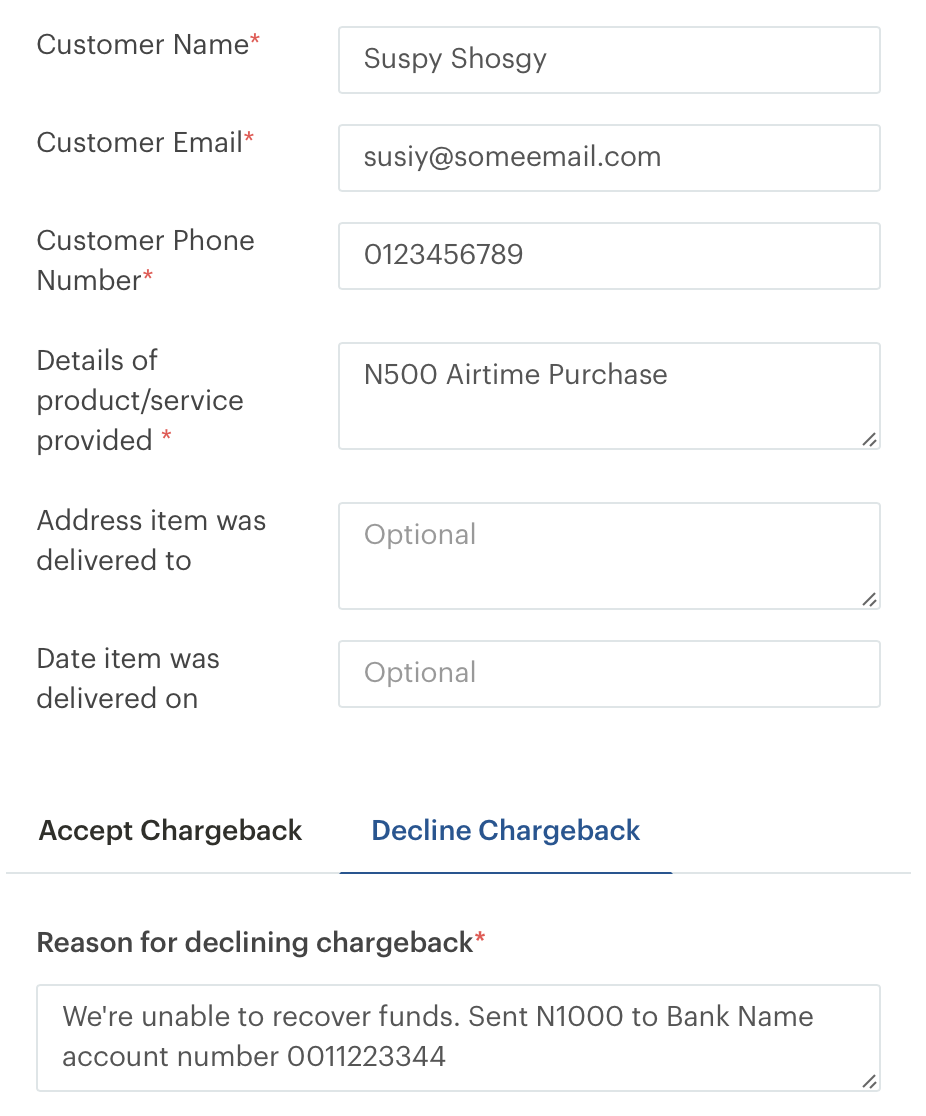Fraud and how to resolve fraud claims
A customer makes a fraud claim at their bank when an unauthorized transaction occurs on their account.
Some customers may fail to recognize debits appearing on their account and may choose to file a fraud claim with their bank, stating that they are unaware of the transaction. However, fraud typically occurs when a malicious individual obtains a customer's bank card information, bank account or internet banking details and subsequently carries out transactions on the customer's account.
How to resolve fraud claims
You can resolve fraud claims on the Disputes page of your Paystack Dashboard. You can choose to either accept the fraud claim or decline it.
Accepting a fraud claim
This means you either haven't given out value for this transaction and you will be able to reverse it, or you will be able to retrieve the value given for the transaction.
When a fraud claim is accepted, we'll deduct the funds from your next payout(s) and make a refund to the customer.
Paystack doesn't charge you a penalty when you accept a fraud claim. However, the full transaction amount is reversed to the customer's bank account once the fraud claim is accepted for a full refund.
Declining a fraud claim
This means you have successfully provided value for the payment made, and you will not be able to retrieve the value provided. In this case, you'll be required to provide details showing that value was provided for the payment made. In addition, you must provide information that'll be useful in helping the bank or law enforcement authorities recover the funds from whoever made the fraudulent payment and benefitted from the transaction.
To successfully decline a fraud claim, a receipt containing some important details must be provided in order for it to be considered valid:
Customer name: The customer's name who initiated the transaction as stated in their identification document.
Customer email: The email address used to initiate the transaction. If you generate an email address for your customer on Paystack and don't collect their personal email address as part of KYC, you can enter the auto-generated email here.
Customer phone number: The customer's phone number in your records.
Masked PAN: The first 6 and last 4 digits of the card used if it was a card payment.
Account number: If the transaction was made via transfer or done through the Pay with Bank channel.
Transaction details: The transaction amount, date, and time.
Details of product/service provided: A description of the goods delivered or the services rendered.
Address item was delivered to/date item was delivered on: If the customer bought physical goods, you should provide the address the goods were delivered and the date when the goods were delivered.
Account details: If you provide a service where funds were transferred to a bank account, you will need to provide the bank account to which the funds were transferred in the 'Reason for Declining Chargeback' text box, along with any further comments you might have.
Here's an example of details provided in the form to decline a fraud dispute. In the example below, the bad customer did not buy any physical goods so the delivery details are left blank:
Important to note
The quality of your receipt is highly dependent on the KYC (Know Your Customer) requirements you've set for your business. With a strong KYC system in place, you can identify who you're transacting with and provide accurate information about them if needed.

